Guide to Birding at Bombay Hook National Wildlife Refuge
Bombay Hook National Wildlife Refuge is one of the top birding sites in Delaware. Bombay Hook has a single entrance road which takes you past the visitor centers. The gate is open from a half hour before sunrise to a half hour after sunset. Once you are in the refuge, there are connected driving loops. The birding primarily consists of observing from the road or stopping at a handful of parking areas that have trails, some of which lead to observation towers. This is an unofficial guide so check official sources for up-to-date information.
I highly recommend bringing a spotting scope, but binoculars or a camera are often sufficient due to the volume of birds.
Eighteen eBird hotspots cover individual sections of the refuge. Using these hotspots will make your data more specific and valuable. The eBird hotspot “Bombay Hook National Wildlife Refuge” encompasses the entire refuge and can be more convenient when wanting to do a single list for a whole visit.
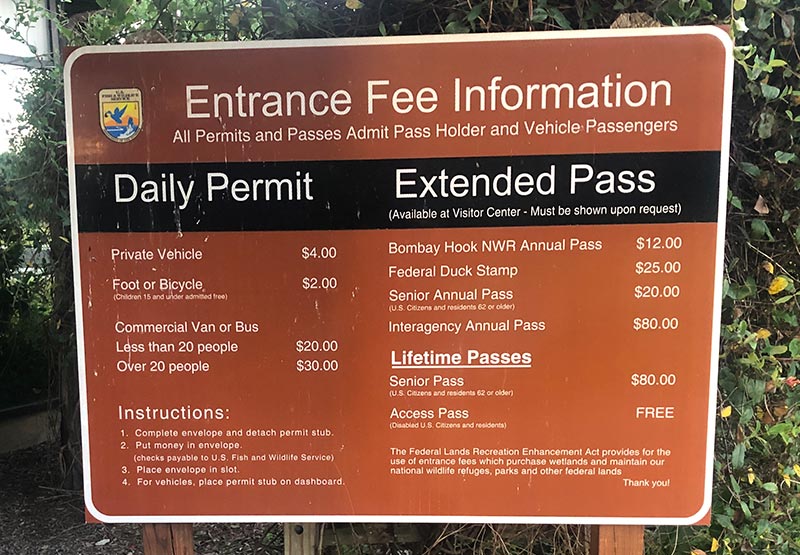
Entrance Fee
Entrance fees are self-pay. The daily entrance fee for a private vehicle is $4.00. Extended passes are also available. A Bombay Hook annual pass is $12.00 and a federal duck stamp that gives you access to all national wildlife refuges is $25.00.
Entrance fee deposit boxes are located outside the visitor center and along the road just past the visitor center.
Bathrooms
Bathrooms are located at the visitor center, at the beginning of the Bear Swamp loop, and at the Beaver Pond. Only the visitor center bathrooms have running water, though it is non-potable.
Directions
From Smyrna, Delaware take Smyrna Leipsic Road east until it merges with Route 9 southbound. After the merge take the first left turn to head east on Whitehall Neck Road which leads directly into the entrance to the refuge.
Insects
If Bombay Hook is famous for its birds, it is infamous for its bugs. No summer visit is complete without endless complaints about “greenheads.” Saltmarsh Greenhead Flies (Complex Tabanus nigrovittatus) will swarm your car and fly in the open windows. Unfortunately, some people interpret this to mean that they must stay in their cars with the windows up and they end up missing a great experience. If flies get in your car, simply shoo them to a side window and slightly open it. The flies bounce against the glass and head up and out.
When staying along the road you will be fine to get out and bird without getting eaten alive. Long pants and sleeves are a good choice. A breeze can help keep the bug activity lower.
Other insects (e.g., mosquitos) can be a nuisance in summer, especially in wooded areas like the trails to the observation towers. To stay in these areas for any extended period you will probably need more extreme measures such as netting. If you want to visit the towers in summer, walk quickly to get there. Once you get up top the bugs usually aren’t bad.
Tides and Sun
If shorebirds are your main target, be aware of tides and sun direction when visiting. As you are heading north through the refuge the pools are on your left and the bay is on your right. The pools are non-tidal, whereas the bay is tidal. In the winter months, the water in the pools is kept deeper for waterfowl. In the summer months, the water in the pools is kept shallow for shorebirds. When the tide is high, shorebirds lose their habitat on the bay-side and concentrate in the pools. When the tide is low the shorebirds spread out on the bay-side and can be seen in areas such as Leatherberry Flats across from Shearness Pool, though often distant. A rising high-tide is usually the best because shorebirds will be actively moving into the pools.
The light in the morning is good for viewing birds in the pools. The light in the evening is good for viewing birds on the bay-side. The three towers are located at the south end of their respective pools allowing for good light for much of the day. You want the sun behind you to have the best light on the birds you are viewing.
Driving Tips
- Be mindful of your speed, especially when passing people and other cars.
- If pausing or stopping, pull to the side to allow other cars to pass
- Don’t stop if other cars are behind you with no room to pass.
- Watch the road for wildlife, especially turtles and rabbits.
- When passing, don’t drive through the grass or you may run over wildlife you can’t see.
- Be aware of which areas are one-way (Raymond Loop, Bear Swamp) and which are not (Shearness, Finis).
- Park on the side of the road you wish to observe from so other cars are not forced to squeeze between you and your parked car.
- Speed bumps are placed throughout the refuge.
Refuge Headquarters
The Refuge Headquarters has two entrances. The right entrance takes you into the main area which has informational displays and staff to assist with purchases. The left entrance takes you into a hallway with bathrooms and remains accessible when the rest of the building is closed.
A new headquarters was recently constructed and will open soon.
As you pass the visitor centers look to your right to see the gourds of a Purple Martin colony that is active during the breeding season.
eBird Hotspot: Bombay Hook NWR--Refuge Headquarters
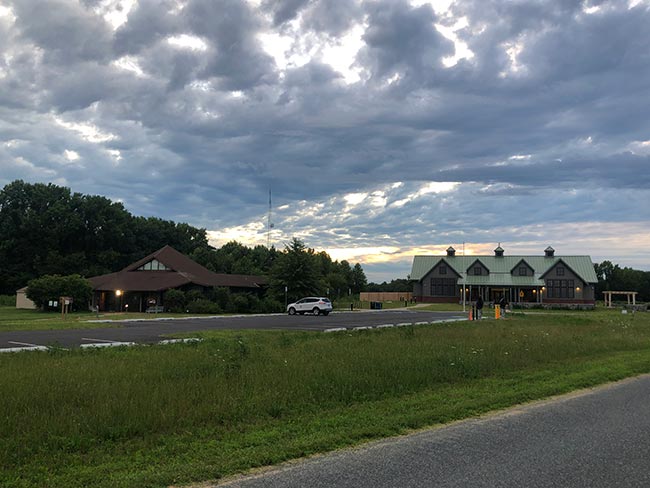
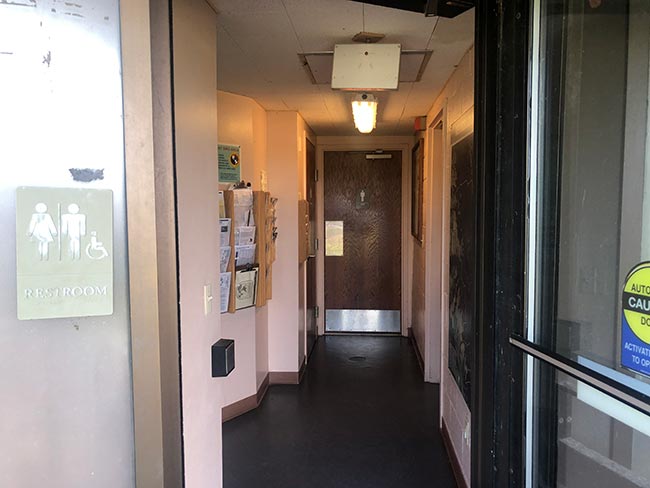
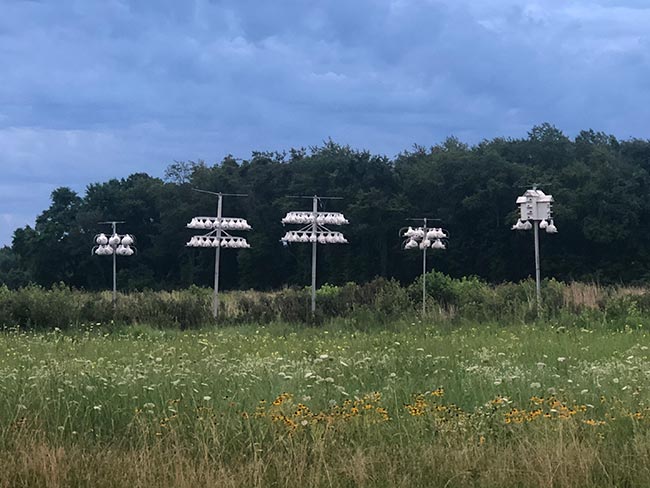
Raymond Pool Loop
The Raymond Pool loop is a paved road with gravel edges. It makes a one-way counter-clockwise driving loop.
Cottman Pool
Cottman Pool is a small pond to your right. It is worth momentarily stopping with the windows down. This is a reliable summer spot to hear Swamp Sparrow. Also look for perched Belted Kingfishers.
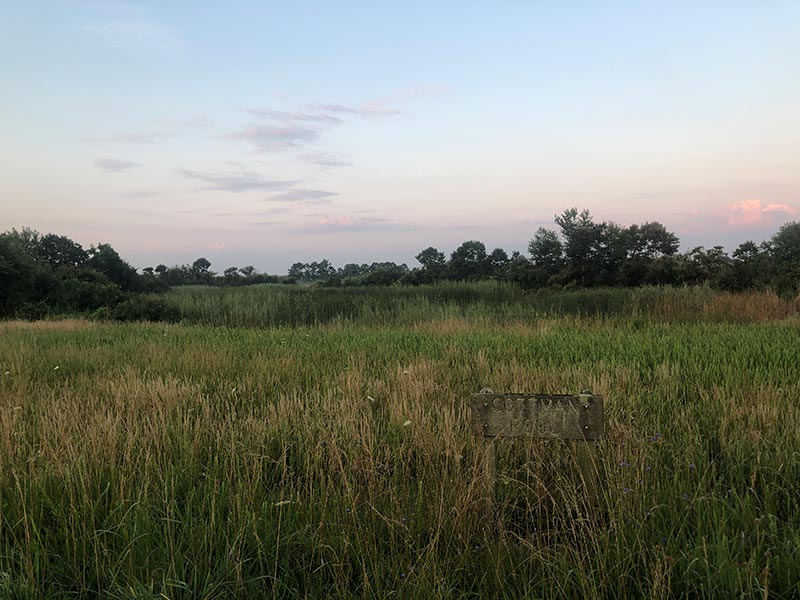
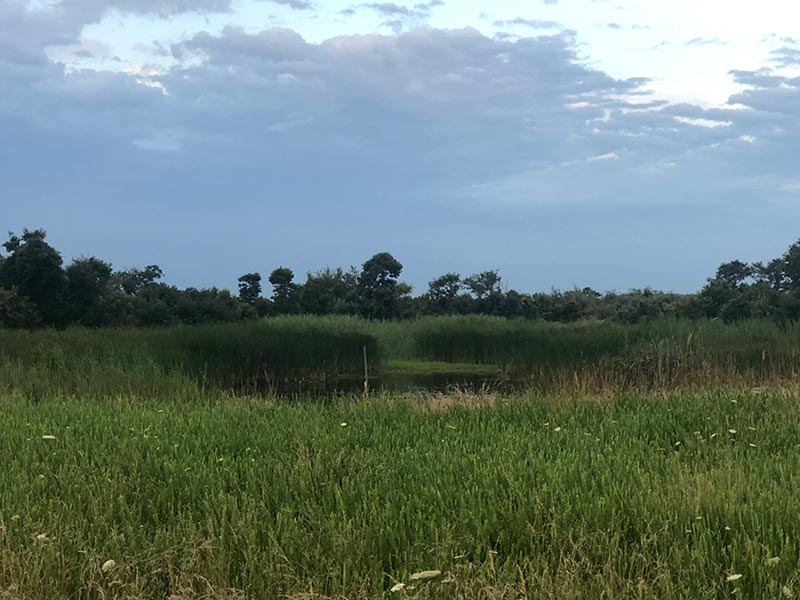
Raymond Observation Tower
The entrance to the Raymond Tower parking lot splits off to the left. The walk to the tower is about a tenth of a mile. The trail can be quite buggy in the summer, but the tower itself usually isn’t bad. Three sets of steps take you to the top of the tower which has a nice view looking north over Raymond Pool. The tower is especially useful for getting a look at the birds in the back of the pool that are too distant to see well from the road.
eBird Hotspot: Bombay Hook NWR--Raymond Pool overlook trail
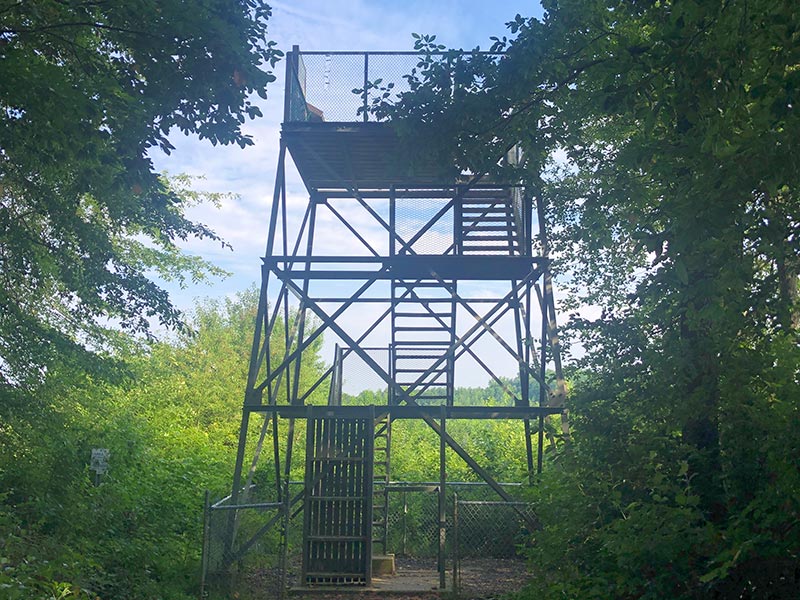
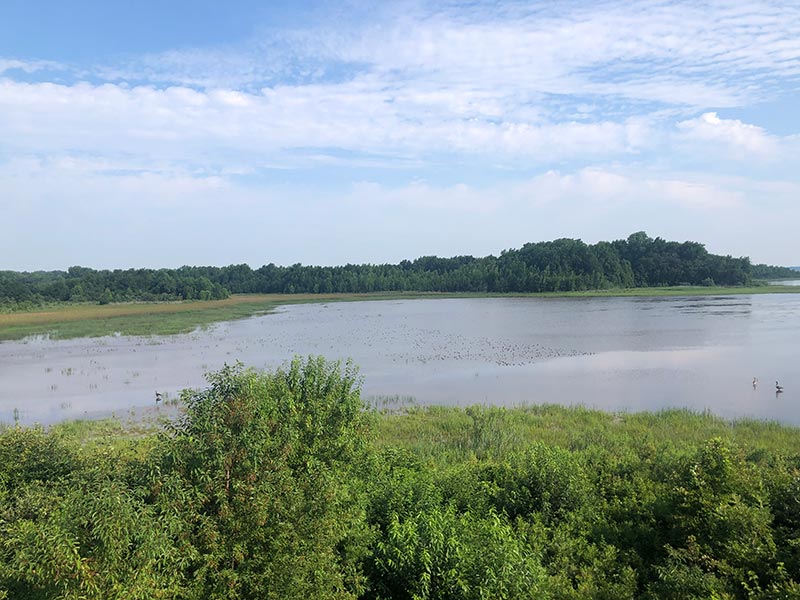
Saltmarsh Boardwalk Trail
The Saltmarsh Boardwalk Trail has a small gravel pull off on the right for parking. It is a lollipop trail that goes through some wooded areas then opens up to a boardwalk that looks out over marsh.
eBird Hotspot: Bombay Hook NWR--Saltmarsh Boardwalk Trail
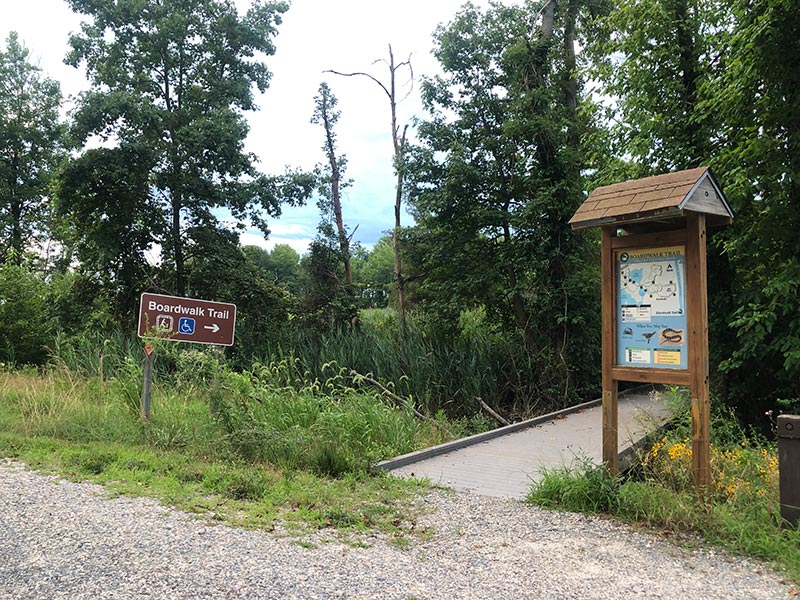
Raymond Pool
The road curves to the left and Raymond Pool is visible to the left. The road is wide but remains one-way. Stopping anywhere along here is acceptable. Most cars park on the left shoulder. Stopping at multiple spots is recommended to get the best view of birds in all areas of the pool. The water level is kept low in summer making this an excellent spot for shorebirds, especially at high-tide.
eBird hotspot: Bombay Hook NWR--Raymond Pool
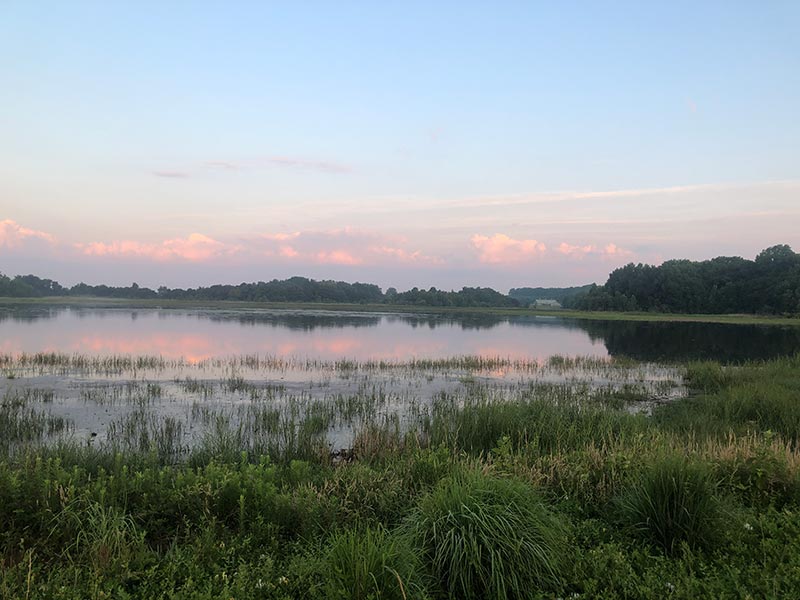
Intersection with Shearness
A right turn will take you to Shearness pool and the rest of the refuge via a two-way road. A left turn will take you past the Shearness observation tower then back to the entrance.
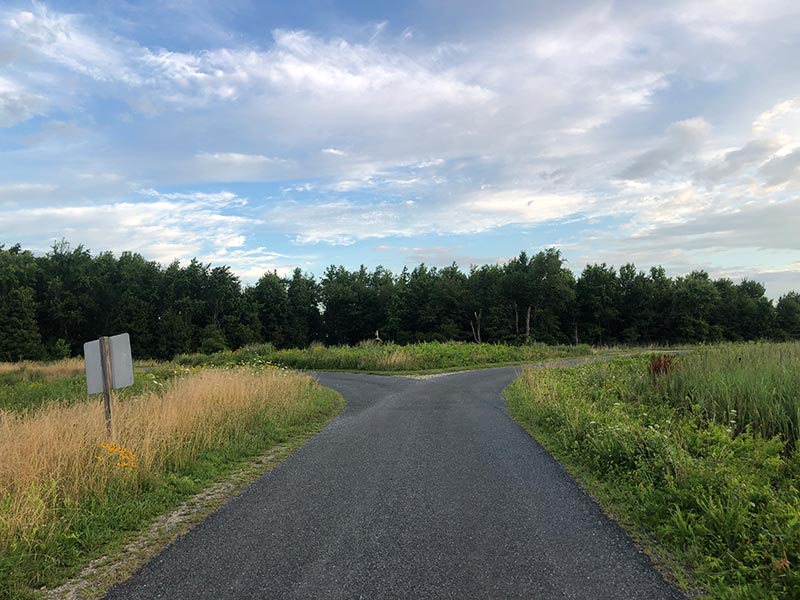
Shearness Observation Tower
A gravel parking lot for the Shearness Observation Tower is located on the right. A tenth of a mile trail through the woods goes to the tower. This trail is often buggy. Remember that the road is one-way so if you wish to continue to the rest of Shearness after leaving the tower you must go around the Raymond Loop again.
eBird Hotspot: Bombay Hook NWR--Shearness Observation Tower trail and fields
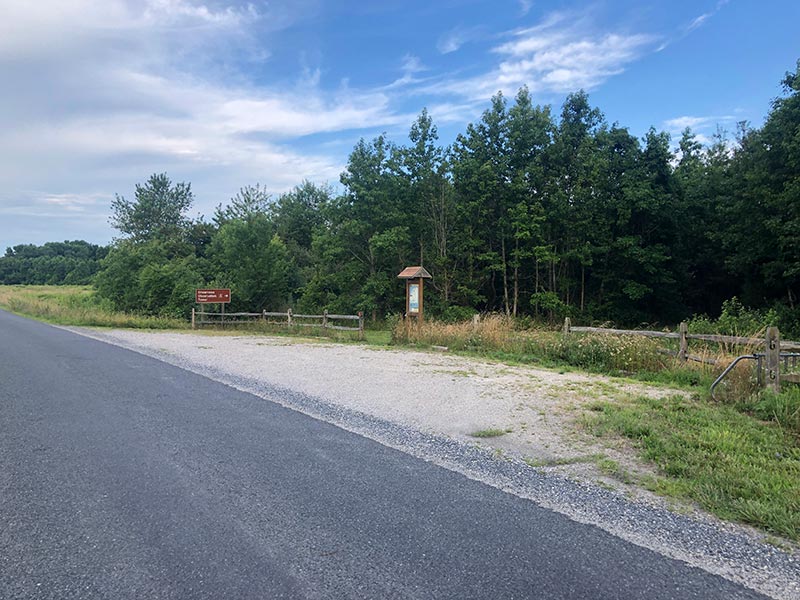
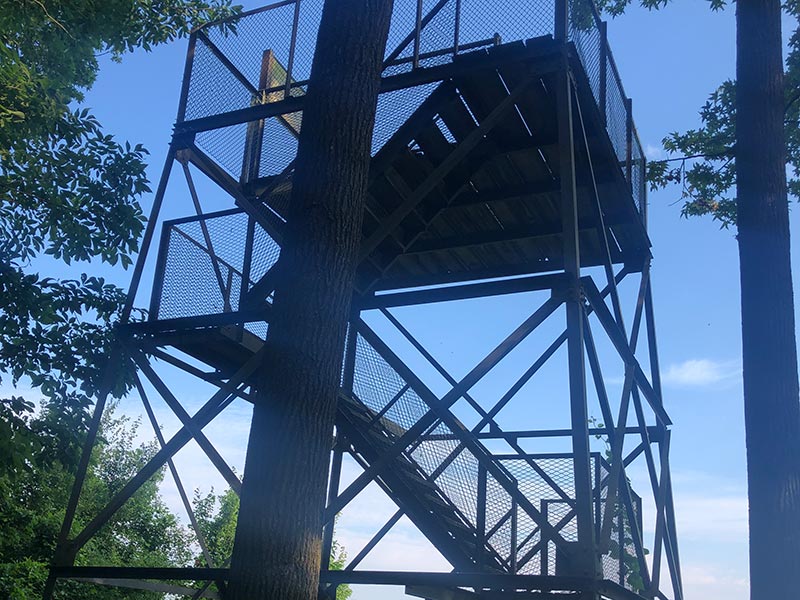
Return to Visitor Center
After passing the Shearness tower parking area the habitat becomes grassy on both sides. The road curves to the left then comes to a stop sign. Continuing straight will take you back around Raymond pool. Turning right will take you back to the visitor centers and out of the refuge.
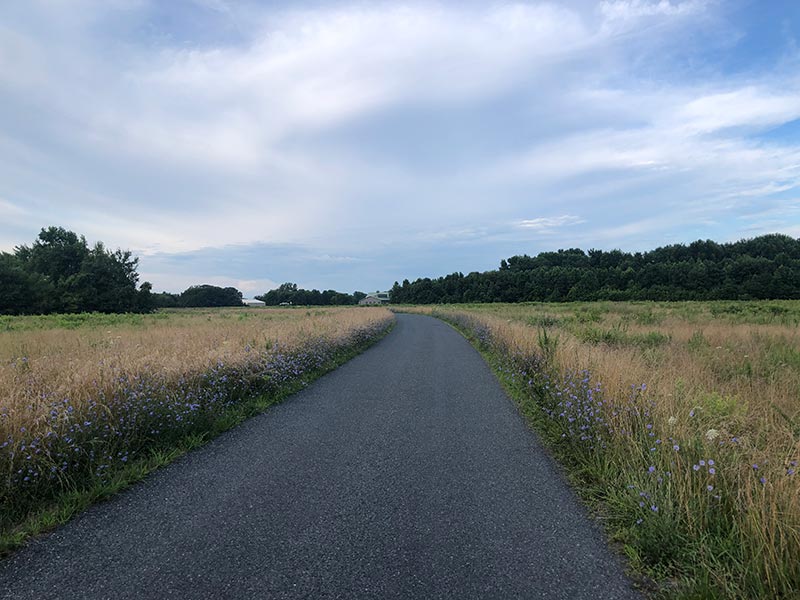
Shearness Pool
A wide two-way road goes along Shearness Pool. Cars can pull over anywhere along this stretch. Scan both sides for birds, but depending on the tide and sun angle one side may be better than the other.
eBird Hotspot: Bombay Hook NWR--Shearness Pool
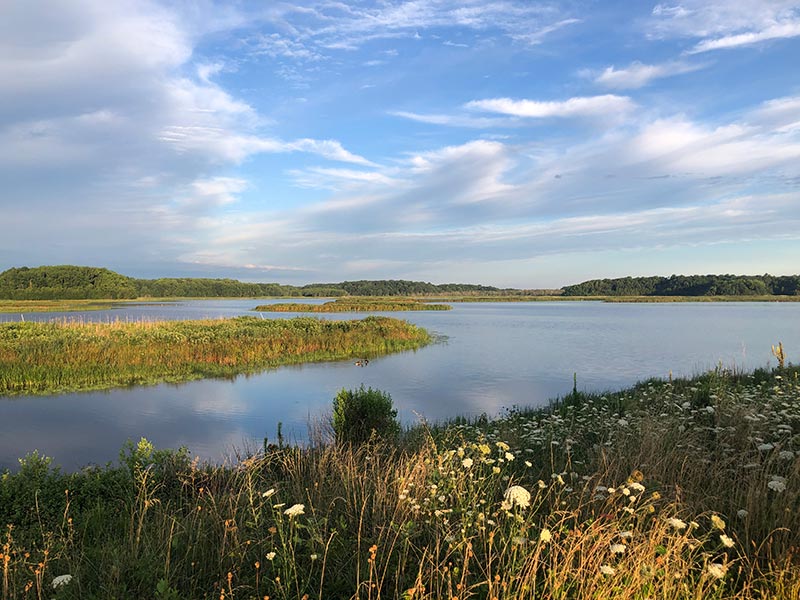
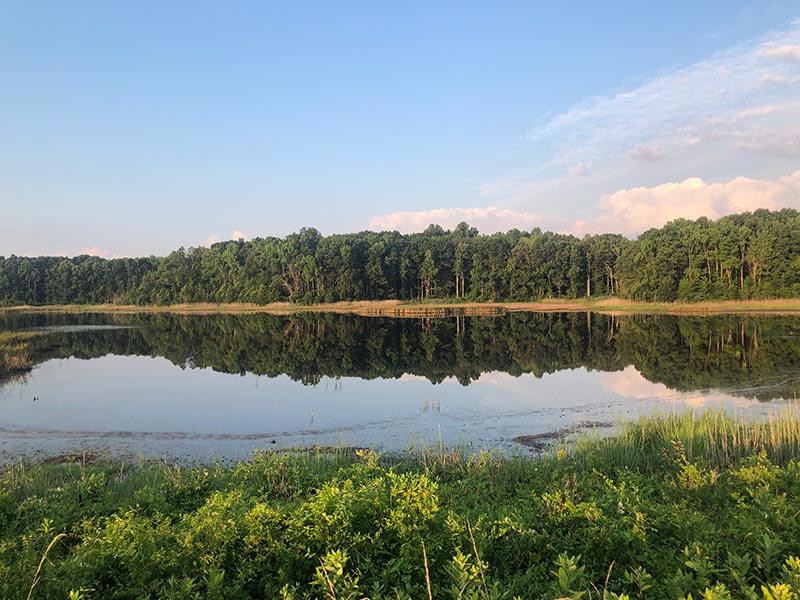
Daly Overlook
The Daly Overlook is a gravel parking area about halfway up Shearness Pool. Benches are located at each end.
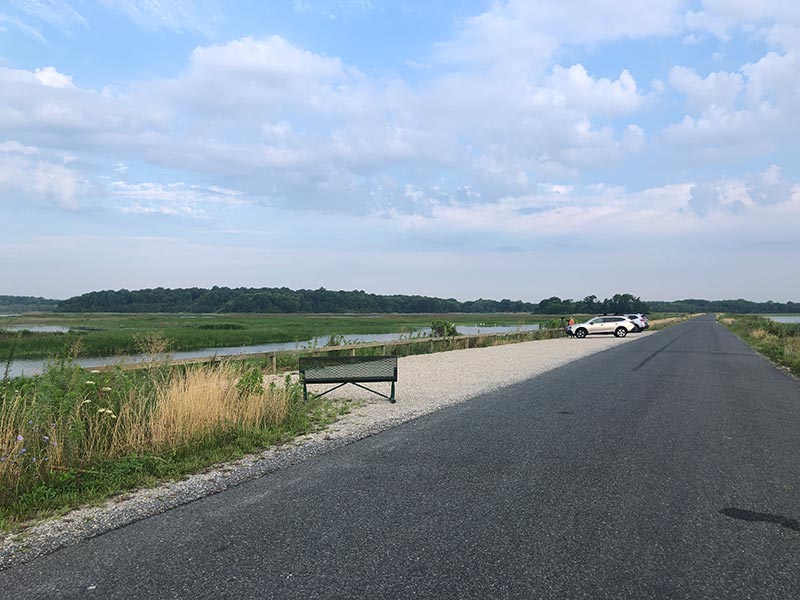
Leatherberry Flats
Leatherberry Flats is the name for the mudflats that are exposed across from Shearness Pool at low tide. At high tide the flats are underwater.
eBird Hotspot: Bombay Hook NWR--Leatherberry Flats
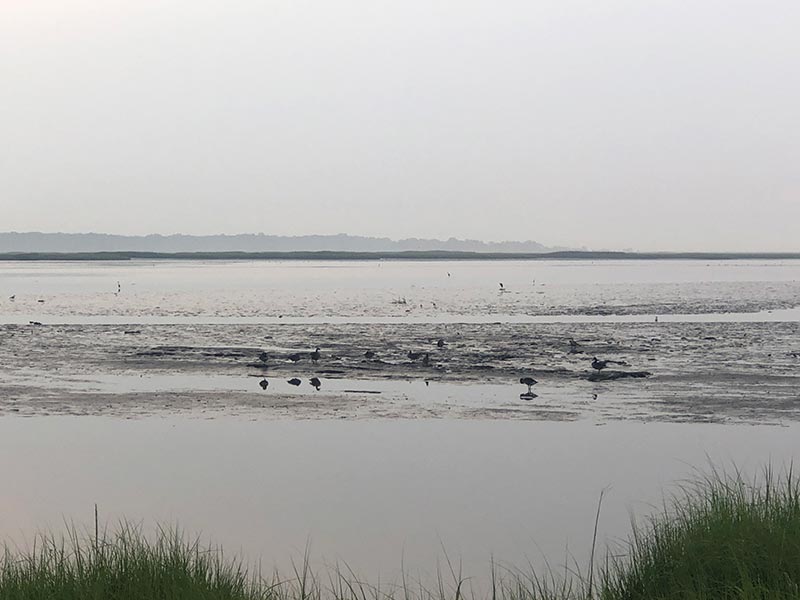
Parson Point Trail
The Parson Point Trail is an out-and-back trail that starts at the north end of Shearness Pool and extends south through a wooded area along the backside of the pool. A sign advertises the round-trip as one mile. The trail has a gravel parking lot large enough for multiple cars. A pond across from the parking lot is worth scanning for birds as well.
eBird Hotspot: Bombay Hook NWR--Parson Point Trail
Intersection of Shearness and Bear Swamp
After passing the Parson Point Trail parking area the road passes through a wooded area then opens up to fields on both sides. The road then forks. A left turn starts a two-way road that goes back to the Beaver Pond and Finis Pool. A right turn starts the one-way road of the Bear Swamp loop.
Bear Swamp
The Bear Swamp loop is a one-way road. A bathroom building is located on your left. Adjacent to the bathroom is the gravel parking area for the trail to the Bear Swamp Tower. This tower is similar to the others. A side trail makes a short loop through the woods as well.
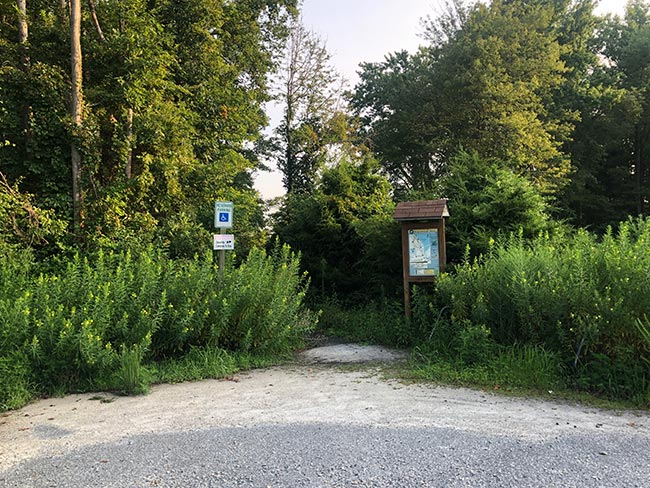
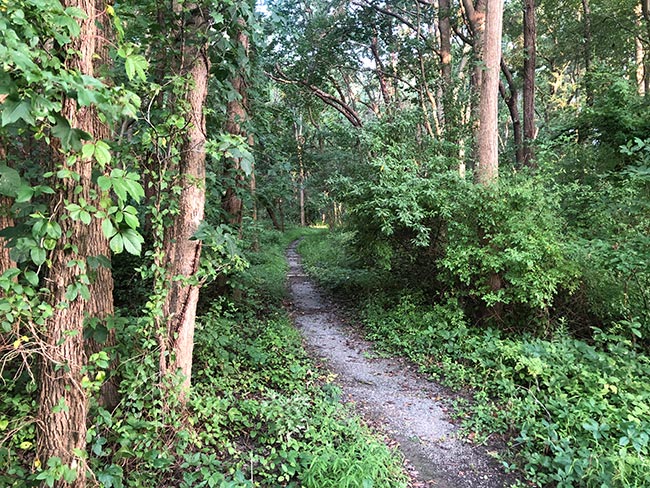
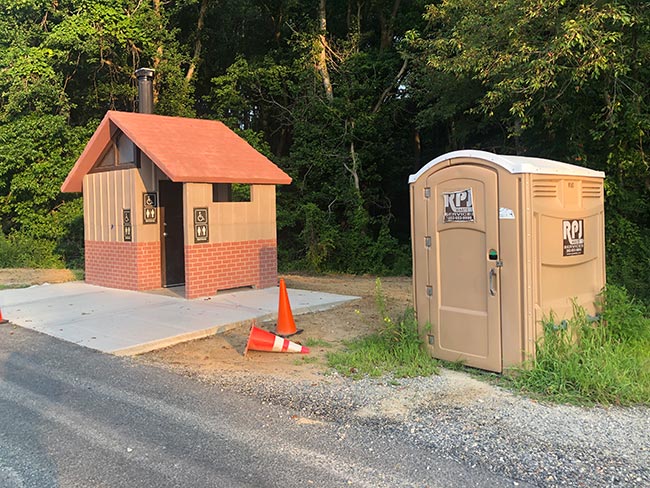
After passing the parking lot the road crosses a small bridge and the view opens up with Bear Swamp to the left. The road curves around to the left. The road is fairly narrow but there is enough room to pass stopped vehicles. To the right is a large area of tidal marsh. At the north end of the pool the road curves to the left and goes away from the pool through some brushy and forested areas. The road ends at a fork, marking the end of the one-way section. Turn right to access the Beaver Pond and Finis Pool. Turn left to head back towards Shearness or make another loop of Bear Swamp.
eBird Hotspot: Bombay Hook NWR--Bear Swamp Pool
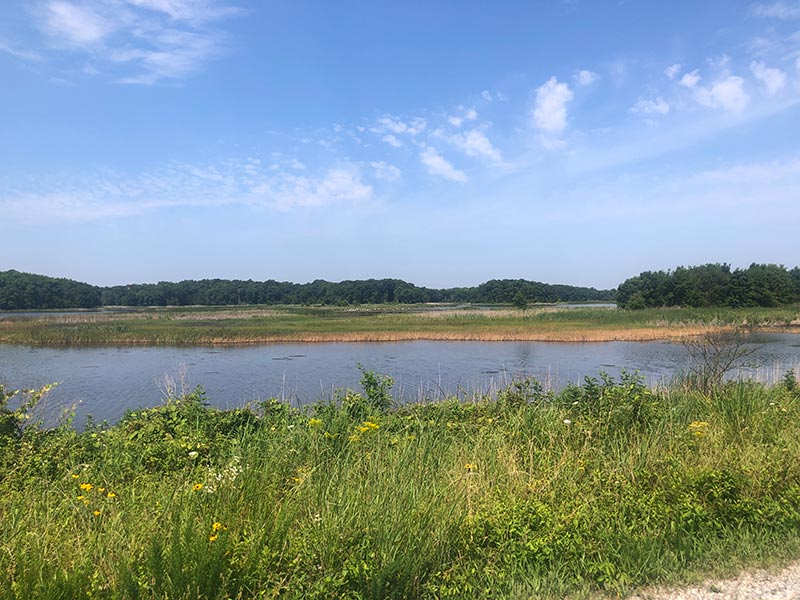
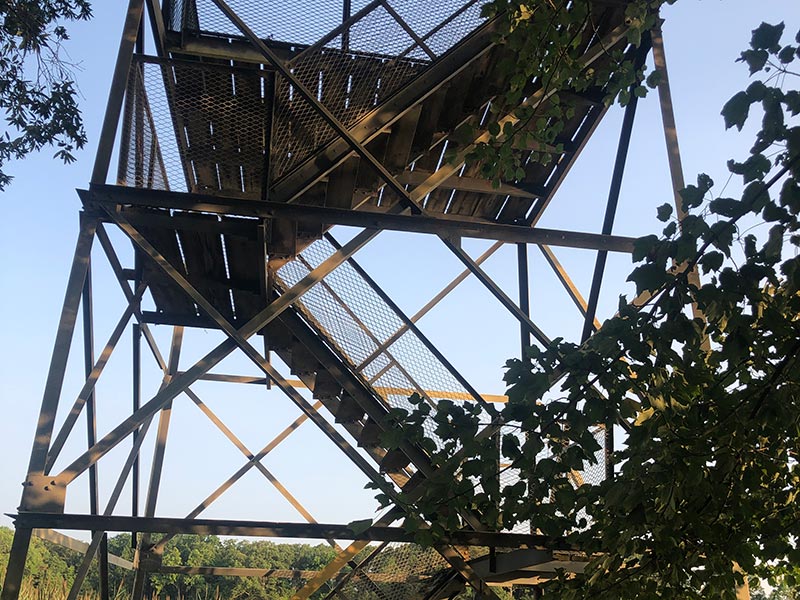
Beaver Pond
At the end of Bear Swamp turn right at the fork and then continue straight to reach the Beaver Pond. A small parking lot includes handicap parking. Across from the parking lot is a bathroom with no running water. The Beaver Pond is a popular spot for Green Herons and both species of night-herons. Fishing is permitted. This area is buggy in the summer. A road extends past the pond to the Allee House but this area is now closed so you must turn around and come out the same way you came in.
eBird Hotspot: Bombay Hook NWR--Beaver Pond
Finis Pool
When coming out from the Beaver Pond turn right onto Finis Pool Road which is a two-way road. The road goes through some wooded areas then opens up with Finis Pool to the right. This pool has grown up with vegetation so only a limited amount of water is visible. After crossing a small bridge the road re-enters the woods where a turnaround circle is located. One option is to turn around here. The other option is to continue straight ahead to the gate. Inch up to the gate and it will automatically open allowing you to exit the refuge onto Raymond Neck Road. Continue straight until you reach a stop sign at the intersection of Whitehall Neck Rd. Turning left will take you back to the visitor center. Turning right will take you west to Route 9.
eBird Hotspot: Bombay Hook NWR--Finis Pool
All photos © David Brown.
Like this? Want to help fund more tools and projects on our site?
Support LycoBirds
